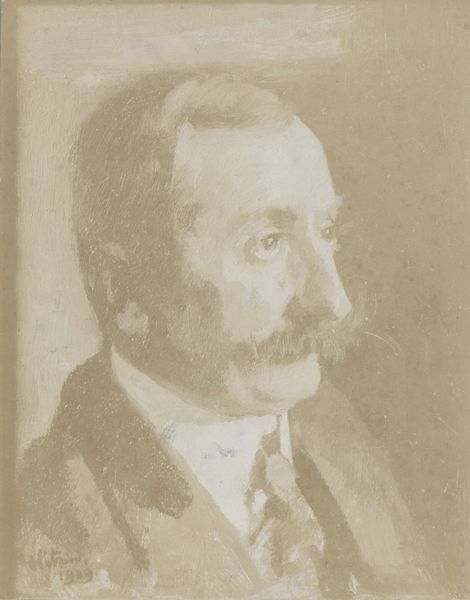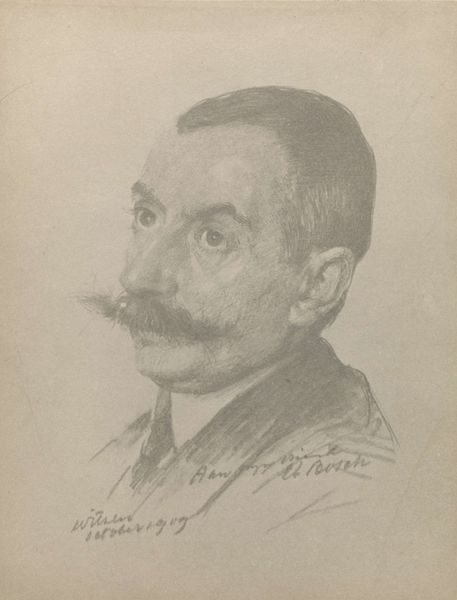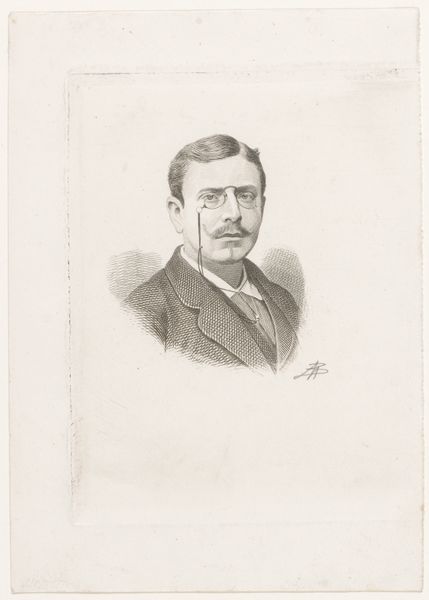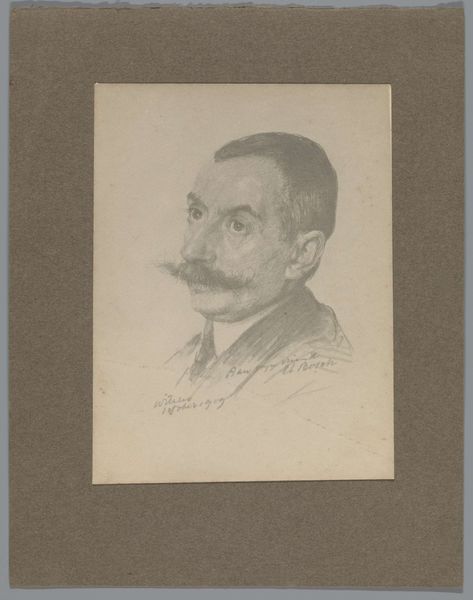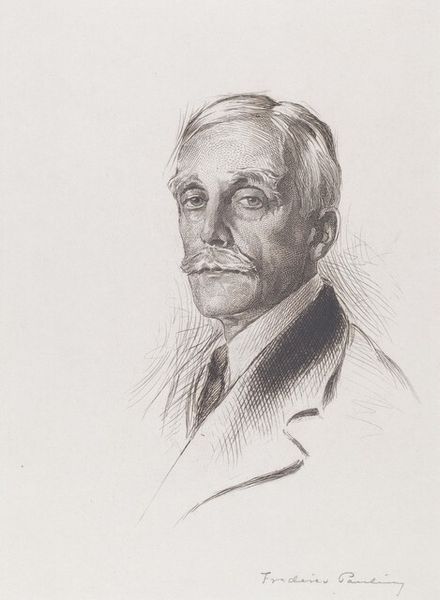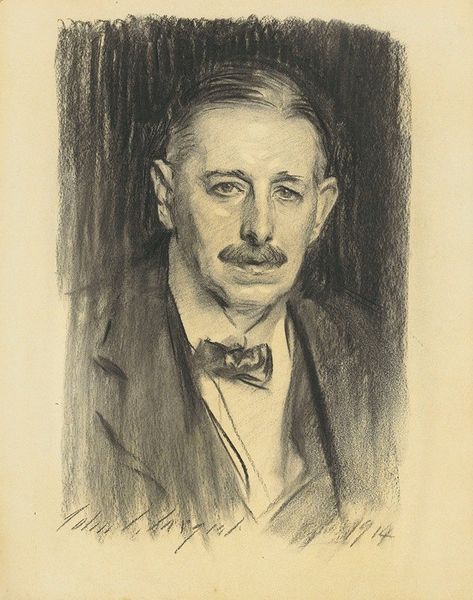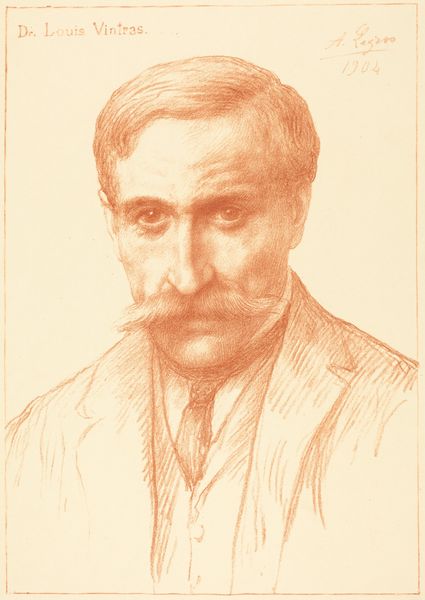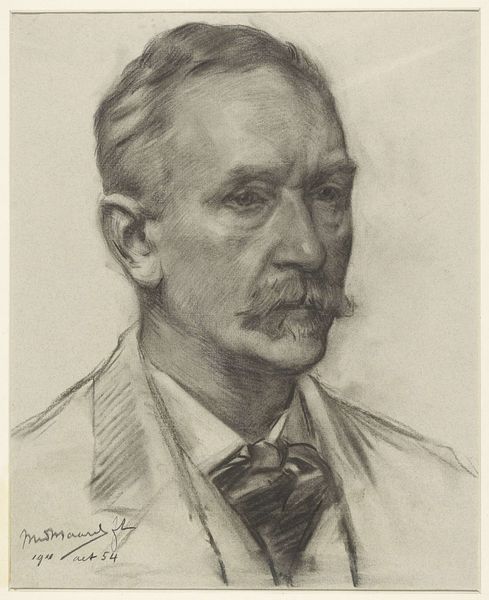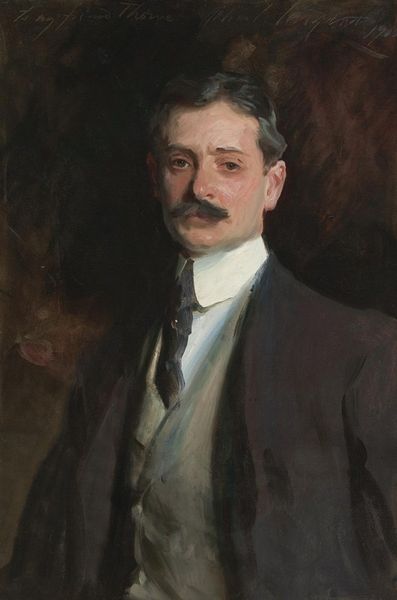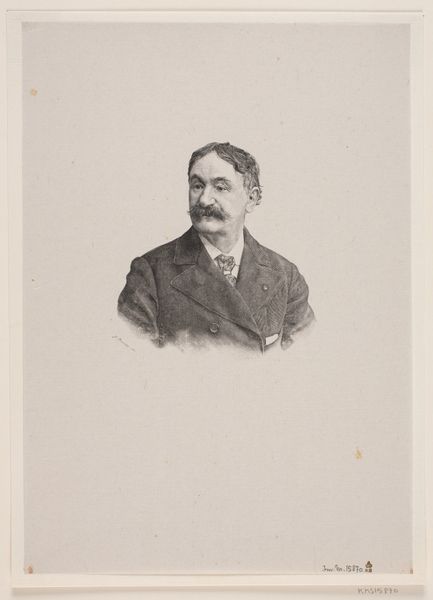
Reproductie naar een foto, schilderij, tekening of prent c. 1860 - 1915
0:00
0:00
diversevervaardigers
Rijksmuseum
painting
#
portrait
#
portrait image
#
painting
#
charcoal drawing
#
portrait reference
#
portrait head and shoulder
#
animal drawing portrait
#
portrait drawing
#
facial portrait
#
academic-art
#
portrait art
#
fine art portrait
#
realism
#
digital portrait
Dimensions: height 167 mm, width 130 mm
Copyright: Rijks Museum: Open Domain
Curator: This is “Reproductie naar een foto, schilderij, tekening of prent,” which translates to “Reproduction after a photo, painting, drawing, or print.” It's dated somewhere between 1860 and 1915. Editor: The monochrome palette gives it an air of austere formality, don't you think? Almost like a photograph, capturing a likeness for posterity, even if it's reproduced. Curator: Indeed. Considering its creation during a time of expanding industrial processes, I am curious about its specific reproductive technique. The material handling—the way the paint seems deliberately applied—invites questions about artistic intention in replicating other mediums. Editor: You are right to notice the hand in it. It speaks to a specific socio-economic context. Perhaps affordable portraits created for a growing middle class? Democratizing representation itself? Curator: Quite possibly. The original, or its likenesses, were being disseminated through printed formats. It raises critical inquiries concerning authenticity, artistic value, and how social stature influenced access to visual representation. Editor: Museums at the time grappled with defining high art versus these sorts of reproductions, didn’t they? Classifying art was—and is—never neutral. Curator: Precisely! Examining its provenance might further expose prevailing institutional biases, aesthetic standards, and market dynamics during this epoch. The fact that it acknowledges itself as a reproduction begs a deconstruction of artistic agency. Editor: So, is it then about challenging the notion of a singular, authentic artistic genius by drawing attention to the mechanisms and contexts behind creating images in general? Curator: It may function as commentary on the emergent image culture. How we consume, interpret, and ascribe significance to portraits within varying social strata. Editor: Fascinating. I now appreciate this unassuming work much more—not just as a historical record but also as an early media-critique artifact. Curator: Agreed. Investigating production circumstances sheds light on underlying ideologies that dictate representation throughout history.
Comments
No comments
Be the first to comment and join the conversation on the ultimate creative platform.
